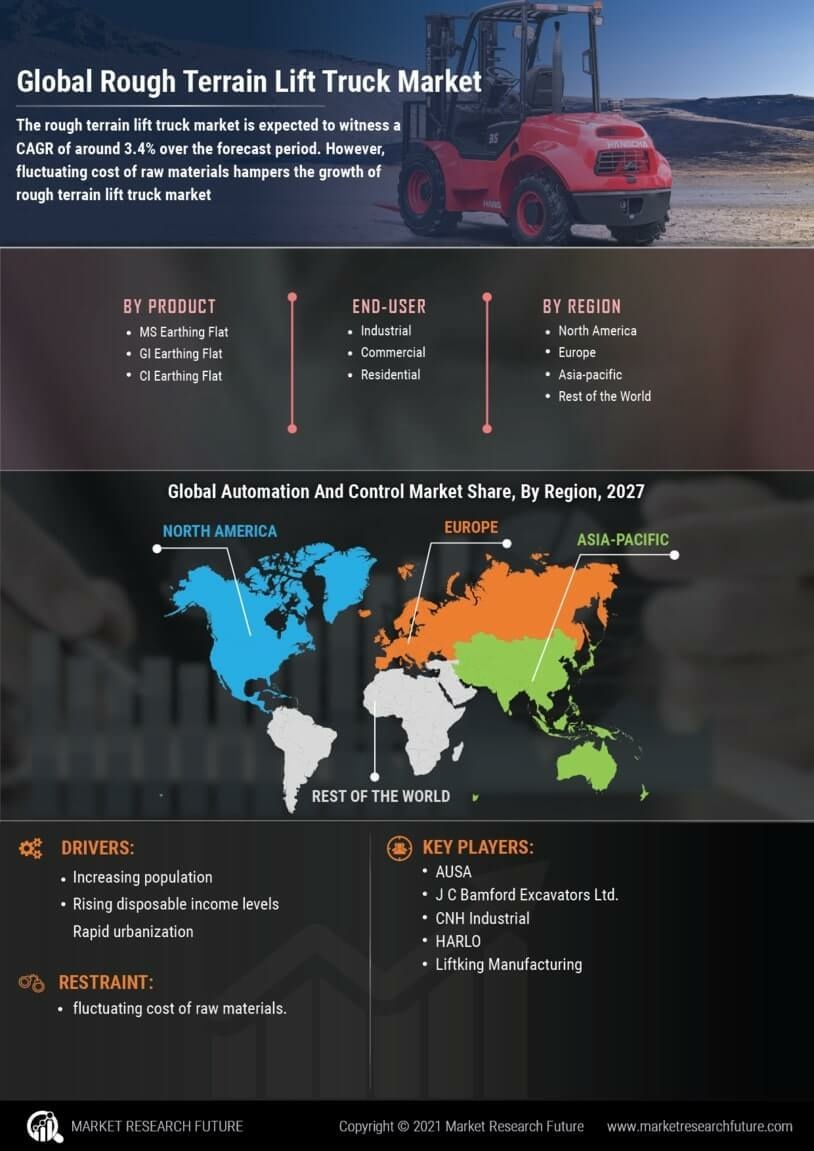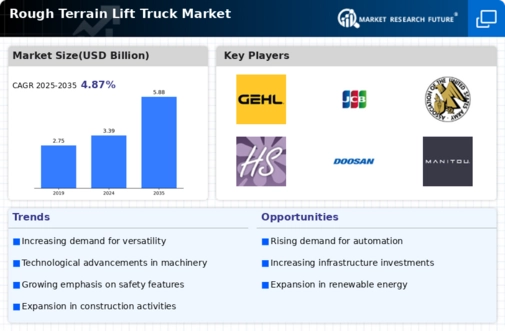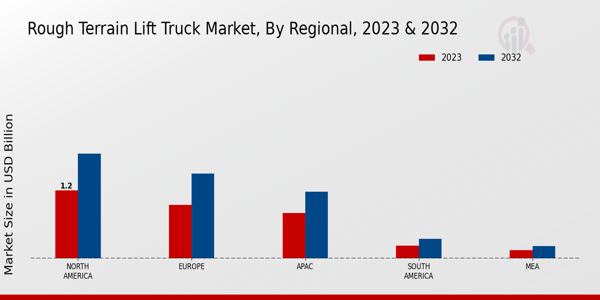Market Growth Projections
The Global Rough Terrain Lift Truck Market Industry is poised for substantial growth, with projections indicating a market size of 5.88 USD Billion by 2035. This anticipated growth reflects a compound annual growth rate (CAGR) of 5.14% from 2025 to 2035. The increasing demand across various sectors, including construction and agriculture, coupled with technological advancements, is likely to drive this expansion. As industries continue to seek efficient material handling solutions, the rough terrain lift truck market is expected to evolve, adapting to meet the changing needs of its diverse customer base.
Rising Adoption in Agriculture
The agricultural sector is increasingly adopting rough terrain lift trucks, contributing to the growth of the Global Rough Terrain Lift Truck Market Industry. These vehicles are particularly useful in rural and uneven terrains, where traditional forklifts may struggle. Farmers and agricultural businesses are recognizing the efficiency and versatility of rough terrain lift trucks for tasks such as transporting heavy loads and managing materials. As the agricultural sector continues to modernize, the demand for specialized equipment is expected to rise, further propelling market growth. This trend aligns with the overall expansion of the agricultural machinery market.
Growing Focus on Safety Regulations
The Global Rough Terrain Lift Truck Market Industry is influenced by the increasing emphasis on safety regulations across various sectors. Governments and regulatory bodies are implementing stringent safety standards to minimize workplace accidents, particularly in construction and agriculture. This trend compels companies to invest in compliant equipment, including rough terrain lift trucks that meet or exceed safety requirements. As a result, manufacturers are likely to see a surge in demand for their products, as businesses prioritize safety alongside productivity. This focus on safety is expected to drive market growth in the coming years.
Technological Advancements in Equipment
Technological innovations are reshaping the Global Rough Terrain Lift Truck Market Industry, enhancing operational efficiency and safety. Modern rough terrain lift trucks are equipped with advanced features such as telematics, improved hydraulic systems, and enhanced safety mechanisms. These advancements not only increase productivity but also reduce operational costs. The integration of smart technologies allows for real-time monitoring and predictive maintenance, which can lead to significant savings for operators. As these technologies become more prevalent, they are likely to attract new customers and expand the market further.
Increasing Demand in Construction Sector
The Global Rough Terrain Lift Truck Market Industry is experiencing heightened demand driven by the construction sector's expansion. As urbanization accelerates globally, construction projects require efficient material handling solutions. The market is projected to reach 3.39 USD Billion in 2024, reflecting a robust growth trajectory. This demand is particularly pronounced in regions with significant infrastructure development, such as Asia-Pacific and North America. The ability of rough terrain lift trucks to operate in challenging environments makes them indispensable for construction firms aiming to enhance productivity and safety on job sites.
Sustainability Initiatives Driving Innovation
Sustainability initiatives are becoming a pivotal driver in the Global Rough Terrain Lift Truck Market Industry. As companies strive to reduce their carbon footprints, there is a growing demand for eco-friendly equipment. Manufacturers are responding by developing rough terrain lift trucks that utilize alternative fuels or are designed for energy efficiency. This shift not only meets regulatory requirements but also appeals to environmentally conscious consumers. The market is projected to grow at a CAGR of 5.14% from 2025 to 2035, indicating that sustainability will play a crucial role in shaping future innovations and market dynamics.























